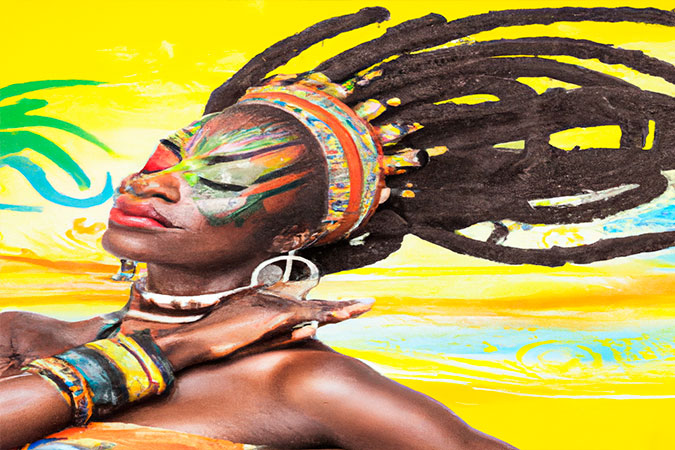The African Roots of Cosmetology: A Cultural Art Form
This article delves into the African roots of cosmetology, emphasizing the cultural significance of braiding and elaborate hairstyles in African societies. It explains how these practices were not just about aesthetics but also served as indicators of social status, wealth, power, and identity. The piece discusses the social role of braiding as an activity that fostered community bonding and generational skill transfer. Furthermore, the article underscores how these African traditions have significantly influenced global beauty standards and practices. It concludes by acknowledging the invaluable contribution of African cosmetology to our understanding of aesthetics, identity, and community.

A Cultural Art Form
The history of cosmetology is rich and diverse, with its roots spreading across various cultures and civilizations. Of these, the African heritage of cosmetology is particularly influential, shaping many of the practices and styles we see in today’s beauty industry. With an emphasis on braiding and elaborate hairstyles, the African tradition of cosmetology is not merely about aesthetics but also serves as a symbol of social status, wealth, power, and identity.
The Art of Braiding in African Culture
Braiding, a technique that originated with the Himba people of Namibia around 3500 BCE, is a significant aspect of African cosmetology. The Himba are credited with the creation of cornrow braids, a style that is popular worldwide today. Similarly, the Zulu tribes in South Africa were the first to wear Zulu knots, also known as Bantu knots, another iconic hairstyle that has transcended borders and cultures.
In many ancient African tribes, the pattern of one’s braids and their hairstyle could reveal a lot about their identity. It was common for hairstyles to indicate a person’s tribe, age, marital status, wealth, power, and even religious beliefs. The intricate designs and patterns were not just a form of self-expression but also a means of communication, conveying vital information about the individual’s social standing and personal life.
Furthermore, many tribes adorned their hair with red earth, adding color and further complexity to their hairstyles. The practice of coloring hair continues today, with people worldwide using hair dye to express their individuality and style. Elaborate hairstyles and headdresses were also common, serving as symbols of stature and reinforcing the societal importance of personal grooming and aesthetics.
Braiding as a Social Art
Beyond its aesthetic and communicative functions, braiding also played a significant social role in African societies. Due to the time-consuming nature of the process, braiding sessions often became social gatherings. Elders would braid their children’s hair, allowing for the transfer of skills from one generation to the next. At the same time, these sessions offered an opportunity for social bonding and storytelling, reinforcing community ties and cultural traditions.
This tradition of braiding and social bonding has been carried forward for generations, extending its reach beyond Africa to various corners of the world. Today, braiding remains a popular hair styling technique, and the social aspect of the practice continues in many cultures.
The African Aesthetic
From the earliest times, the hair of African people was seen as a reflection of their well-being and existence in the world. Adorning the head with elaborate hairstyles was, and still is, a cultural art form in the African aesthetic. This emphasis on personal grooming and hairstyling has had a profound influence on global beauty standards, inspiring countless hairstyles and beauty practices worldwide.
Conclusion
The African roots of cosmetology offer a fascinating insight into the historical and cultural significance of beauty practices. From the intricate art of braiding to the symbolic importance of hairstyles, these traditions have significantly influenced the global beauty industry. As we continue to explore and embrace different beauty practices, we carry forward the rich heritage of African cosmetology, acknowledging its invaluable contribution to our understanding of aesthetics, identity, and community.






